In our post What is a Center of Excellence (CoE) we explained that there are three approaches that your CoE can take, Centralized, Decentralized, or Hybrid; then, in our post What is Business Maturity and how does it influence your CoE?, we touched on how your approach will influence the way that Roles and Responsibilities are allocated between your CoE and your Line of Business (LoB).
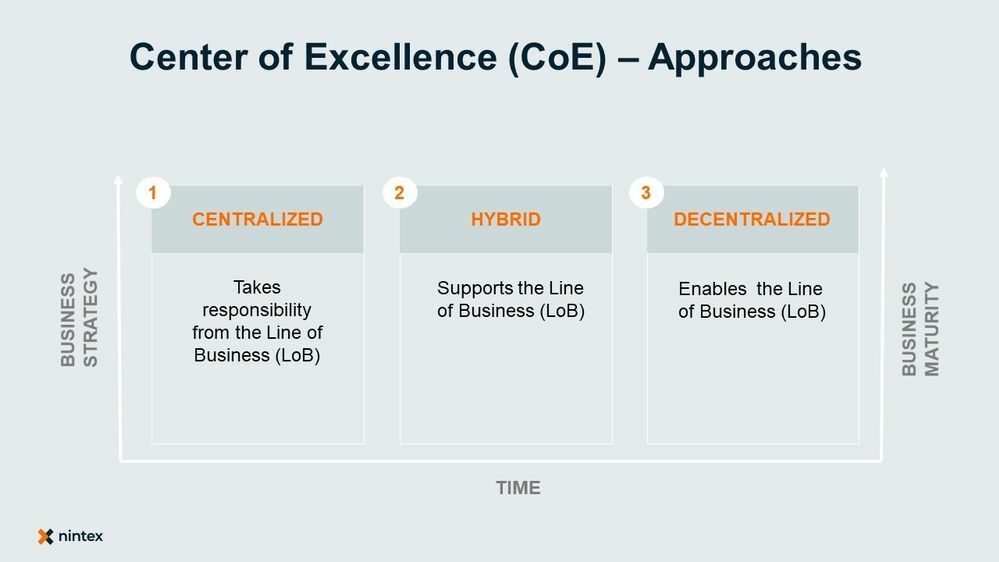
In this month’s post, I’d like to focus in a bit more detail on how Roles and Responsibilities of Process Management can be shared between the CoE and LoB, as well as how you can implement and enforce them using Promapp.
When it comes to process management, there are a few activities that you’ll need to consider – while the following is not an exhaustive list, these are the ones that I’ll dive into during this post:
- Creating and enforcing a Process Management Framework
- Process group design
- Process ownership
- Process creation, maintenance, and improvement
Creating and Enforcing a Process Management Framework
Creating a Process Management Framework involves defining the rules that determine how processes will be used and managed in your organization and, importantly, what good looks like. Specifically, the sort of questions that will be needed to be answered are things like:
- Where and how are we going to map and access processes (e.g. Promapp, Word documents, PowerPoint etc)?
- When documenting a process, what are the process writing standards that need to be met?
- What do our governance roles and responsibilities consist of (who needs to be responsible and accountable for what)?
- What governance is needed for a new process to be created, or for an existing process to be changed?
When it comes to the Process Management Framework, the answer is straightforward – it must be the responsibility of the CoE. If every part of the business can come up with their own Framework, then you are setting yourself up for a fragmented approach to process management across the business where process information is recorded in multiple formats, lives everywhere, and is never updated. In turn, this will perpetuate the business operating in departmental silos, minimize the use of process documentation by the LoB and, ultimately, reduce the impact of any Operational Excellence (OPEX) program.
While these rules need to be defined outside of Promapp, the enforcement of these elements can be facilitated through Promapp. For this, you should turn to the Process Approval Workflow.
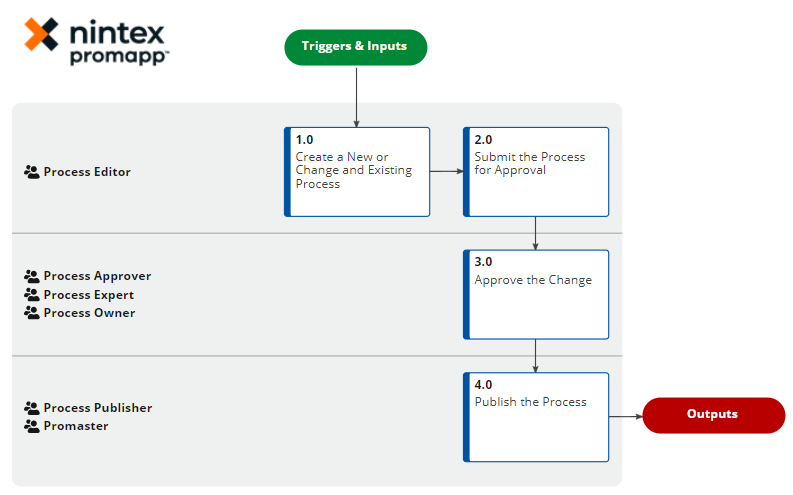
While this workflow is configurable, by default, every process must be published by a Promaster. Given that your Promasters are typically going to be members of your CoE, this will ensure that your CoE retains oversight and can prevent processes that don’t adhere to the rules established in your Framework from being released to the business.
Process Group Design
The next consideration that needs to be made is who should design your top-level Process Groups (L0) as well as your Sub-Groups (L1).
Again, the answer at L0 is straightforward – while input may be gathered from the LoB, it should be the responsibility of the CoE as the decisions that are made here will impact how processes are used across the entire business. L1 becomes more open to discussion where, under a centralized approach, L1 would also be the responsibility of the CoE while under a decentralized approach, it would be the responsibility of the LoB (and a hybrid would be agreed upon on a case-by-case basis).
Once these ownership decisions have been made, the next question is that of enforcement because, the last thing that you want, is for your group structure to be modified by a rouge LoB employee. In Promapp this is achieved using Privileges and Stakeholders.
In Promapp there are three privileges, ‘Promaster’, ‘Business Analyst’, and ‘User’. In order to create and edit process groups, you will need to have either the ‘Promaster’ or ‘Business Analyst’ privilege; therefore, ensuring that all members of the LoB are assigned the ‘User’ privilege will remove their ability to accidentally (or otherwise) make changes that are outside of their remit. If you choose to assign responsibility to the LoB to structure their own L1 Groups, you can make the necessary people ‘Process Group Champions’ which will enable them to create sub-groups in their specific group without being able to modify your L0 structure or the L1 structure of any other groups. For more information on Promapp privileges, see our help guide here.
Process Ownership
Every process needs to have a Process Owner and Process Expert. When creating a Process Management Framework, the CoE should define exactly what the responsibilities and KPIs of these should be, however here is a starting point:
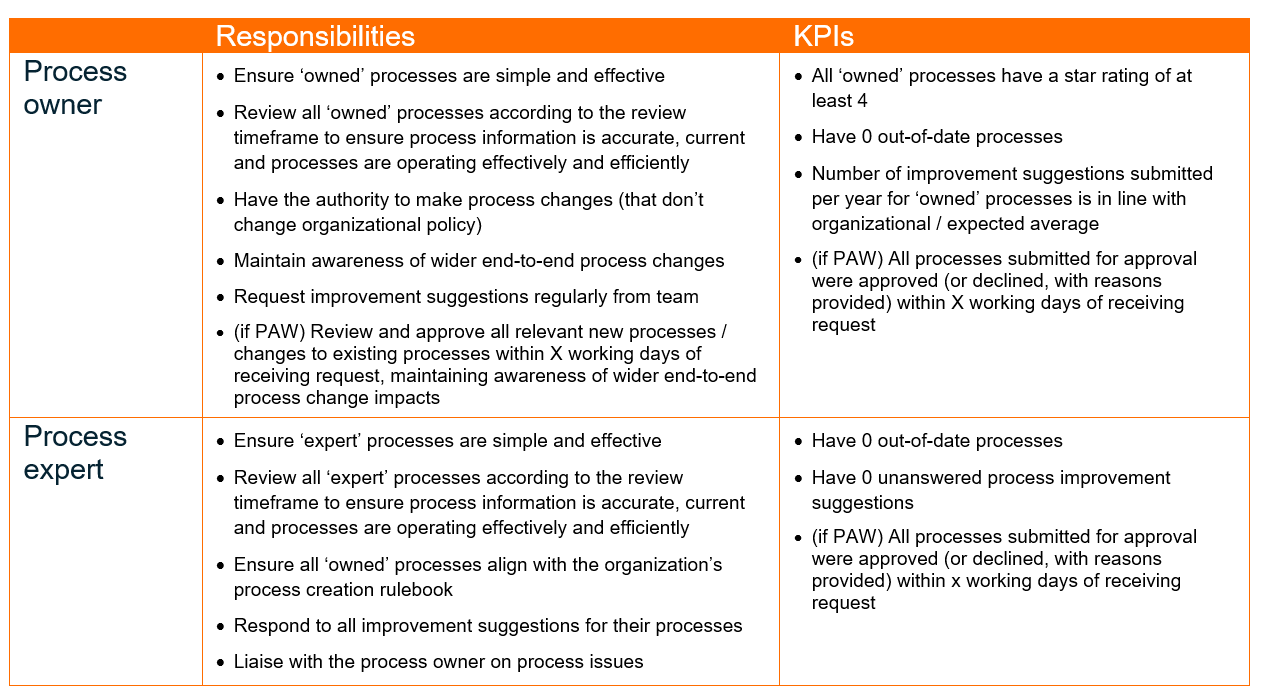
Regardless of which approach your CoE takes, these governance responsibilities should be assigned to members of the LoB. While the CoE might assist with process creation, maintenance and/ or improvement, at the end of the day the LoB are accountable for their own performance which is, in part, a function of the performance of their processes. Your Head of Sales, for example, will have a tough time blaming the CoE for missing their number due being handed down an inadequate sales process!
In Promapp, whenever a process is created an Owner and Expert will have to be assigned which will then appear in the Summary Section of the process:
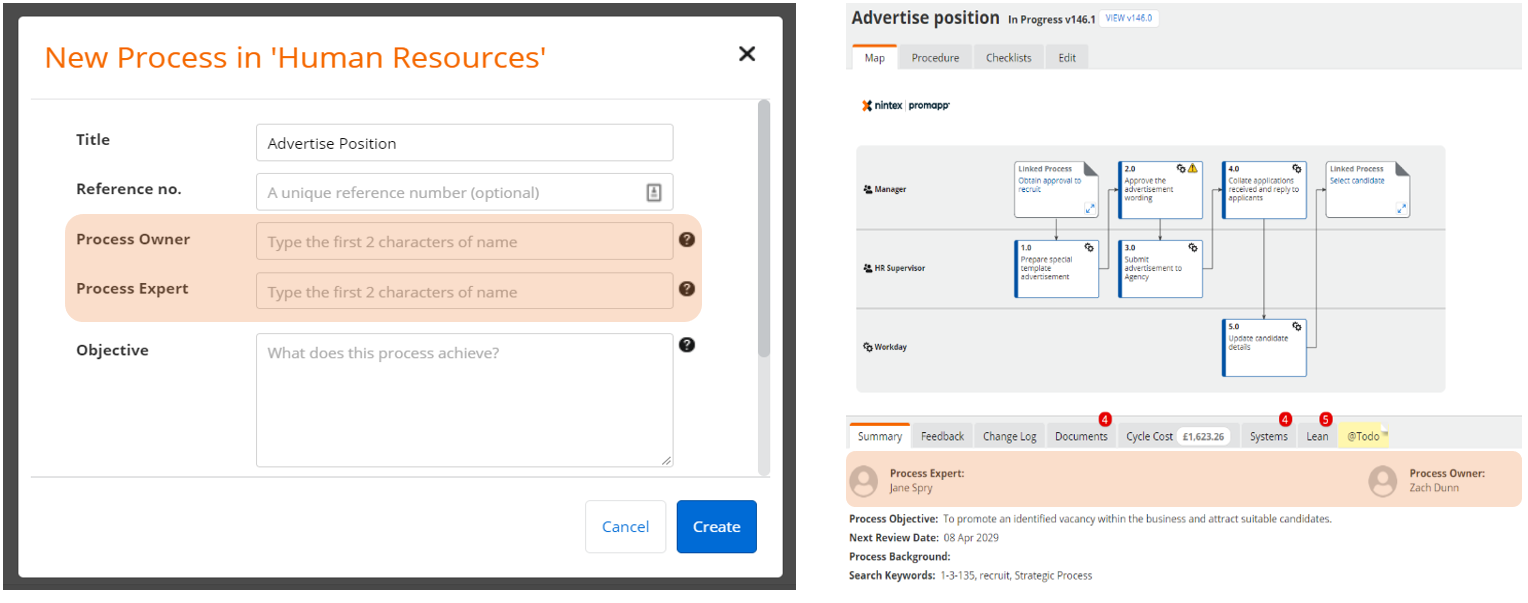
As described earlier, both the Process Owner and Process Expert will form part of the Process Approval Workflow and therefore will have to sign off all changes, even if the change is made by a member of the CoE.
Process Creation, Maintenance, and Improvement
The responsibilities for process creation, maintenance, and improvement will be driven by your CoE approach – a fully centralized approach will see all three being owned by the CoE, a decentralized by the LoB, and a hybrid will see them shared. In making these decisions, the factors that should be considered are:
- Strategy
- Capabilities
- Capacity
From a strategy perspective, the question that you will have to answer is ‘Is it worth pushing this responsibility to my LoB?’. On the one hand, asking the LoB to map, manage, and improve their own processes takes time out of their day that could be spent actually performing these processes. On the other hand, where processes are created by the CoE you run the risk of Process Owners and Experts believing that process is the responsibility of the ‘process guys’ (i.e. your CoE), and therefore failing to contribute to process design and improvement. Similarly, process participants may feel like processes are being documented for the sake of having process documents and therefore fail to appreciate the importance of following the documented processes or flagging where a process needs to be improved. Ultimately then, to get the maximum impact from any OPEX initiative, at some point process creation, maintenance, and improvement responsibilities should be shifted to the LoB. With that being said, if your LoB lack either the capability (skills) or capacity (time) needed to execute, there is no point in assigning them such responsibility as doing so would result in them putting it in the too-hard basket and nothing getting done. Therefore, even if you would like your LoB to perform these activities themselves, if they are not ready you are better off retaining these within the CoE while you build capability and add capacity in the LoB over time. This is summarized in the image below which shows how over time you can shift the roles and responsibilities of process creation away from your CoE to your LoB by increasing your business maturity.
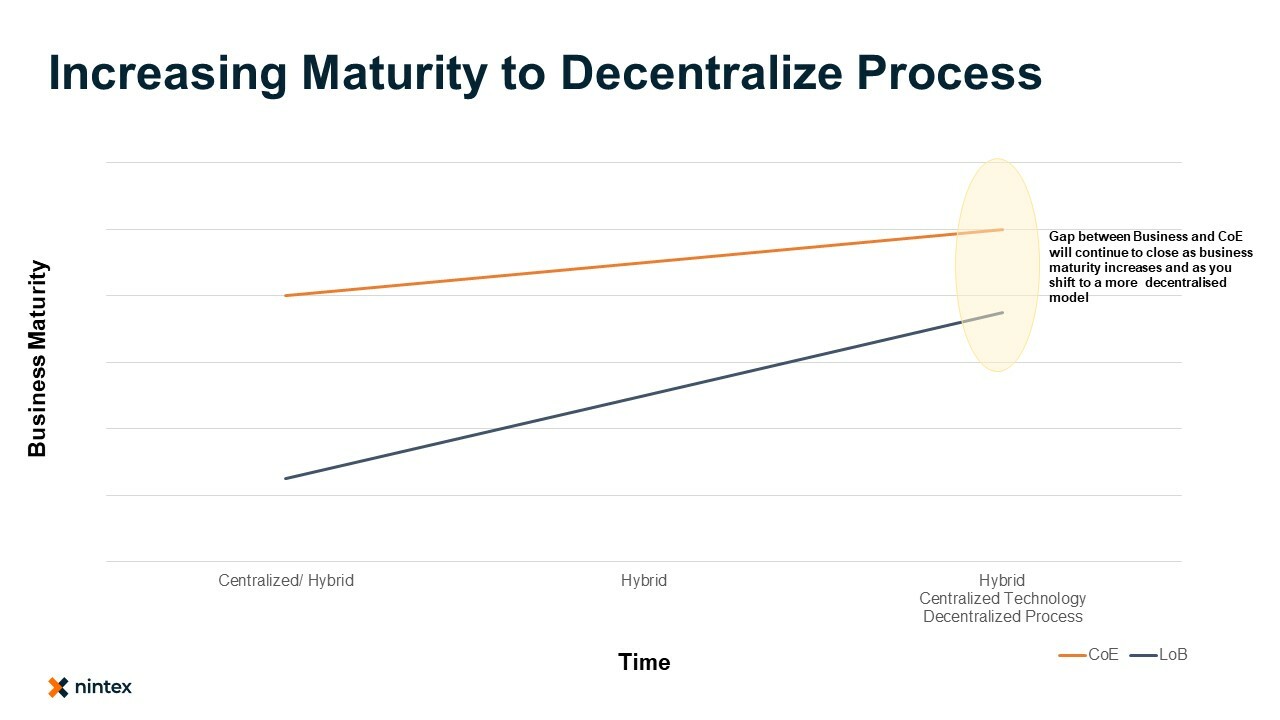
From an enforcement perspective, in Promapp all you need to consider is how you manage Privileges as described earlier. So long as the members of your CoE have been assigned as ‘Promasters’ or ‘Business Analysts’ they will have the ability to edit any process in your site. Equally, assigning the relevant members from your LoB as Process Owners, Process Experts, Group Champions, or Group Editors, will ensure that they have the ability to edit any process within their domain.
To summarize then, when considering the roles and responsibilities of process management, there are certain activities (such as the development of a Process Management Framework, and the design of your L0 Group Structure) that must always be performed by your CoE; equally other activities (such as Process Ownership) must always be the responsibility of your LoB. Other activities however are open for discussion and will be determined by the approach that your CoE takes (Centralized, Decentralized, Hybrid) and will likely change over time, becoming increasingly decentralized as your business matures.
